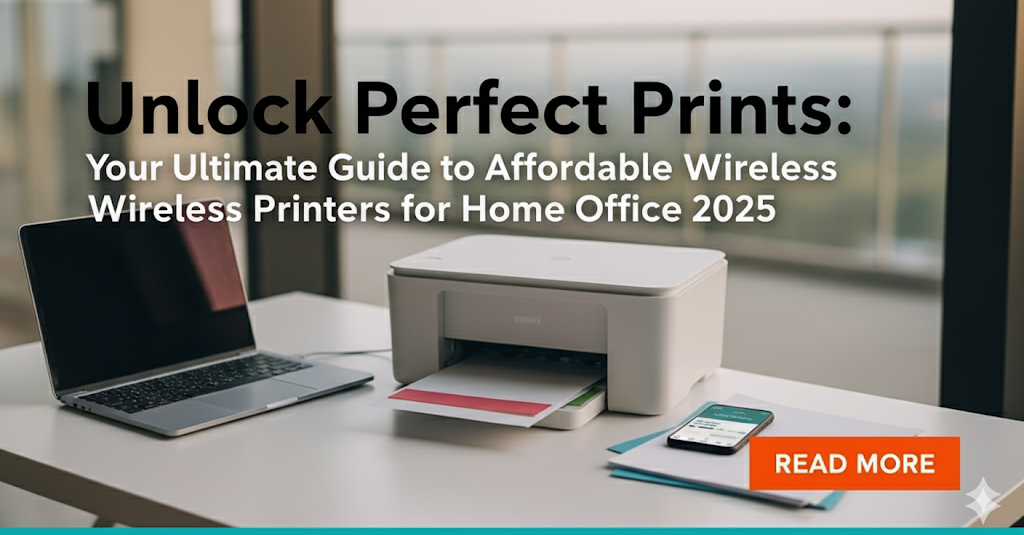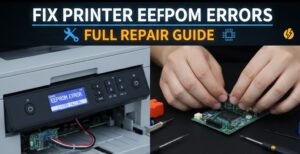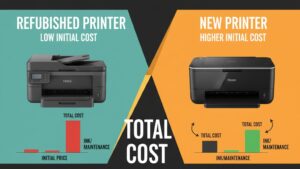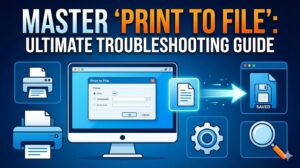The right affordable wireless printers for a home office can feel like finding a hidden treasure. In today’s world of remote work and home-based businesses, a reliable printer isn’t a luxury; it’s an essential tool. But navigating the endless options can be confusing. You need something that prints crisp documents, doesn’t cost a fortune in ink, and connects seamlessly without a tangle of wires. The challenge is finding a machine that balances price, performance, and long-term running costs.
This guide is here to help you do just that. We’ll break down everything you need to know to find the perfect printing partner for your workspace in 2025. Say goodbye to printing frustrations and hello to effortless productivity.
What Defines an ‘Affordable Wireless Printer for a Home Office’?
When we talk about an affordable wireless printer for a home office, we’re looking beyond just the initial price tag. True affordability is measured by the Total Cost of Ownership (TCO). This concept includes the purchase price plus the ongoing cost of ink or toner cartridges over the printer’s life. A cheap printer that guzzles expensive ink is a budget trap waiting to happen.
A great home office printer should also have a core set of features designed for modern productivity:
- Wireless Connectivity: This is non-negotiable. The ability to print from your computer, tablet, or smartphone via Wi-Fi is the foundation of a modern, clutter-free office.
- Functionality: Most users benefit from an All-in-One (AIO) model that can print, scan, and copy. This versatility saves you from buying separate devices.
- Cost-Effective Printing: It must have a reasonable cost-per-page. This is where you compare the price of a cartridge to how many pages it can print (its “page yield”).
- Compact Footprint: Space is often a premium in a home office, so the printer shouldn’t be a behemoth that takes over your desk.
Ultimately, the best choice is one that meets your specific printing needs without draining your wallet over time.
5 Key Steps to Choosing the Perfect Printer
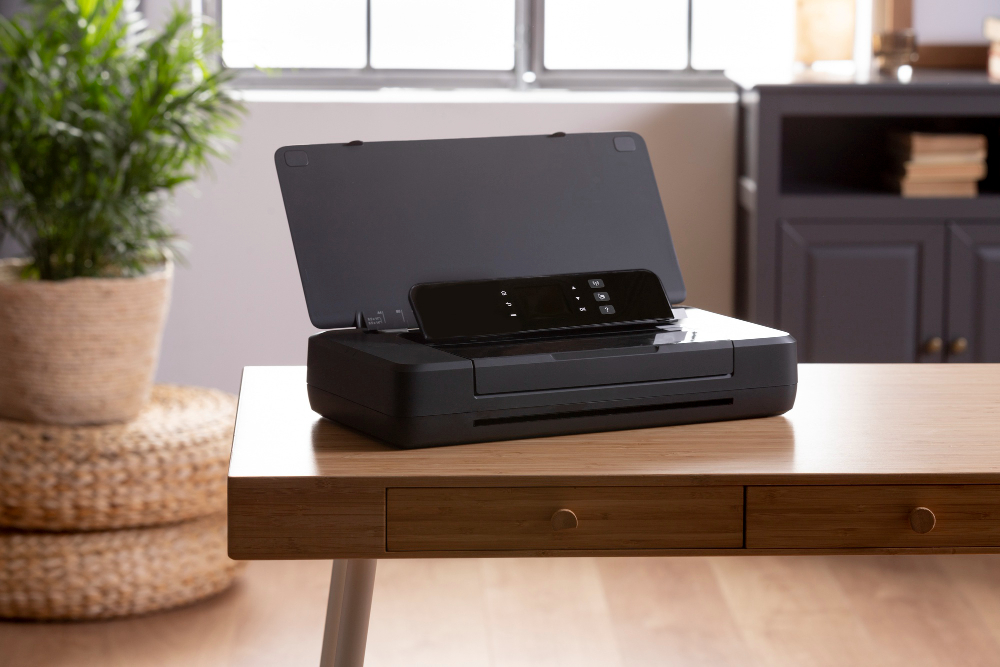
Finding the ideal printer isn’t about luck; it’s about following a clear strategy. By breaking down your needs, you can confidently select a machine that will serve you well for years to come. Here’s a step-by-step guide to making the right choice.
Step 1: Inkjet vs. Laser – Know Your Needs
The first and most important decision is choosing between inkjet and laser technology. This choice directly impacts your print quality and long-term costs.
- Inkjet Printers: These printers spray tiny droplets of liquid ink onto paper. They are the champions of color. If you plan to print high-quality photos, colorful charts, or marketing materials, an inkjet is your best bet. Modern inkjets, especially “ink tank” models, have become much more efficient, making them excellent all-rounders for mixed-use home offices.
- Laser Printers: These printers use a fine powder called toner, which is fused onto the paper with heat. Lasers excel at printing sharp, crisp black-and-white text quickly. If your work involves printing contracts, reports, and invoices, a monochrome laser printer offers incredible speed and a very low cost-per-page. Color laser printers are available but are typically more expensive.
The bottom line for inkjet vs laser for home use is simple: choose inkjet for vibrant color and versatility, and choose a laser for high-volume, sharp text documents.
Step 2: Calculate the Real Cost – Ink and Toner
Don’t be fooled by a low sticker price. The real expense of a printer is its consumables. Before you buy, do a quick search for the price of its replacement ink or toner cartridges. Look for the “page yield” (e.g., “prints up to 250 pages”) to calculate the cost-per-page.
Consider printers with cost-saving ink solutions:
- Ink Tank Printers: Models like Epson’s EcoTank or Canon’s MegaTank use large, refillable reservoirs instead of small cartridges. You buy ink in bottles and pour it in. The upfront cost is higher, but the cost-per-page is incredibly low.
- Ink Subscription Services: Services like HP Instant Ink automatically ship you new cartridges before you run out, based on a monthly printing plan. This can be very cost-effective for consistent users.
Step 3: All-in-One or Print-Only?

Do you just need to print, or do you also need to digitize receipts, copy documents, or scan photos?
- Print-Only: These are straightforward machines dedicated to one task. They are often smaller and cheaper. If you already have a separate scanner or never need one, this is a simple, effective option.
- All-in-One (AIO): These multi-function devices are the most popular choice for home offices. They combine a printer, scanner, and copier into one unit. The convenience of having one machine handle all your document needs is a massive productivity booster.
Step 4: Check Connectivity and Compatibility
“Wireless” means more than just Wi-Fi. A good modern printer should offer multiple ways to connect. Look for support for Wi-Fi Direct, which allows you to print from a device without connecting to your home network. Also, check for mobile printing standards like Apple AirPrint for iPhones and iPads, and Mopria Print Service for Android devices. This ensures you can easily print an email attachment or a web page directly from your phone with just a few taps.
Step 5: Read Reviews and Consider Print Speed (PPM)
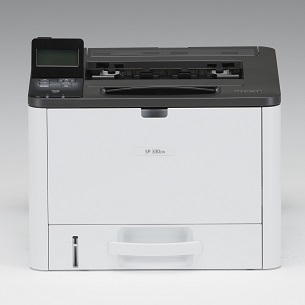
Finally, check real-world reviews from users and professional tech sites. They often provide insights that you can’t find on a spec sheet. Pay attention to comments about the setup process, software quality, and reliability. Also, look at the print speed, measured in Pages Per Minute (PPM). While not the most critical factor for a light-use home office, if you often print long documents, a faster PPM can save you valuable time.
Beyond the Box: Additional Insights for Smart Buyers
Once you’ve nailed down the basics, a few extra features can significantly improve your printing experience. One of the most useful is automatic duplexing, or two-sided printing. This feature automatically prints on both sides of the paper, cutting your paper consumption in half—a win for your budget and the environment.
Another area to consider is printer security and maintenance. Your printer is a connected device, just like your computer or phone, and it needs to be secure. Manufacturers regularly release firmware updates to patch security vulnerabilities and improve performance. To learn more about this crucial topic, you can read this excellent guide on What is Printer Firmware and Do You Really Need to Update It? from a major manufacturer like HP. Staying on top of these updates ensures your printer runs smoothly and safely.
Common Mistakes to Avoid When Buying a Budget Printer
Finding truly affordable wireless printers for a home office means sidestepping common pitfalls. Many people make mistakes that end up costing them more in the long run.
- Focusing Only on the Upfront Price: This is the biggest mistake. A $50 printer might seem like a bargain, but if its ink cartridges cost $40 and only print 100 pages, you’ll quickly spend far more than you would have on a slightly more expensive but efficient model. Always research the ink/toner cost first.
- Ignoring the Physical Size: Home office space is precious. Before you click “buy,” check the printer’s dimensions (width x depth x height). Make sure you have a dedicated spot where it will fit comfortably, with enough room to open the scanner lid and access the paper trays.
- Forgetting About Scan Quality: If you’re buying an All-in-One printer, don’t forget to check the scanner specifications. Look at its resolution, measured in DPI (dots per inch). A higher DPI is better for scanning photos or detailed documents. For simple document scanning, a lower resolution is usually fine.
- Buying More Printer Than You Need: It’s tempting to get a printer with the highest speed and every possible feature. However, if you only print 20 pages a month, you don’t need a high-speed laser printer designed for a small business. Be realistic about your needs to avoid overspending.
Frequently Asked Questions (FAQs)
1. Can I use third-party or refilled ink cartridges to save money? You can, but it comes with risks. While often cheaper, third-party cartridges can sometimes lead to lower print quality, clogged printheads, or may not be recognized by the printer’s firmware. Some printer warranties may be voided by their use.
2. Are wireless printers difficult to set up? Not anymore! Most modern wireless printers have a streamlined setup process, often guided by a smartphone app. As long as you know your Wi-Fi password, you can typically get a new printer connected to your network in 10-15 minutes.
3. What is a good price range for cheap wireless printers for a home office? A good budget-friendly All-in-One inkjet printer can typically be found in the $80 to $150 range. Efficient ink tank models or basic monochrome laser printers usually start around $150 to $250, but offer better long-term value.
4. How long do affordable printers usually last? With proper care, a good quality affordable printer should last between 3 to 5 years. The lifespan depends on your print volume and how well you maintain it (e.g., running cleaning cycles, using quality ink).
Conclusion
Choosing the best of the affordable wireless printers for a home office in 2025 is about smart, informed decision-making. Look past the initial price and consider the entire picture: the cost of ink, the features you actually need, and the type of documents you print most often. By focusing on the Total Cost of Ownership and matching the technology—be it inkjet or laser—to your specific workflow, you can find a device that enhances your productivity without becoming a financial drain.
Your perfect printer is out there. It’s a reliable, efficient, and wireless workhorse that will seamlessly integrate into your home office, ready to bring your digital work into the physical world at a moment’s notice. Happy printing!
Essential Printer Maintenance Checklist: Ultimate Guide to Flawless Printing Read More.

